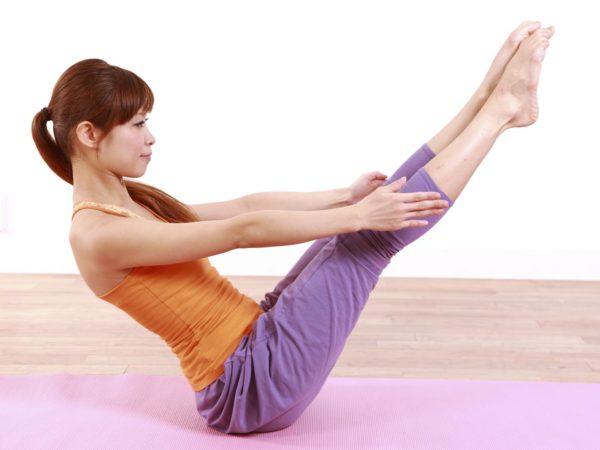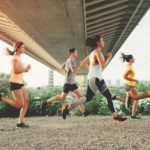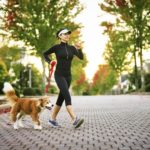Full Boat Pose

“Both the Full Boat Pose and Half Boat Pose are wonderful choices to incorporate into your daily yoga practice. Do them carefully and with concentration; you’ll be rewarded with a stronger, more muscular core.” – Andrew Weil, M.D.
Description & History
The yoga pose Paripurna Navasana, commonly referred to as Full Boat Pose in English, comes from the Sanskrit words paripurna meaning full or entire, nava meaning boat, and asana meaning posture. The Full Boat Pose is a popular pose used to engage the core muscles by strengthening the abdominals and muscles of the pelvis and lower back. While the Full Boat Pose is a difficult yoga pose to perform for many, the benefits of the pose are long lasting.
How to Perform the Full Boat Pose
- Sit on the floor with straight legs in front of you. Inhale and bend your knees so your feet are flat on the floor. Place your hands on the side of your thighs just below your hips, keeping your fingers pointed toward your toes.
- Exhale and slowly lean back at your hips lifting your legs, with bent knees, a few inches off the floor. Make sure your back is straight as you draw your shoulder blades together to lift and open your chest.
- Slowly straighten out your legs. If you cannot straighten your legs, go as far as your can or follow the modified pose in the section below.
- Your thighs should be angled about 45 degrees from the floor as should your torso. From the side your body should look like a “V” with your arms still touching your thighs.
- Begin to slowly move your arms alongside your legs with palms facing down until they are parallel to the floor.
- Hold the pose for 10-20 seconds to begin, gradually increasing the time you hold the pose to one minute. Release the pose by dropping the legs and returning to the sitting position.
Potential Health Benefits
- Strengthens and stretches core muscles (abdominals, hip flexors and lower back)
- Improves balance
- Stretches hamstring muscles of the legs
- Aligns and stretches spine
- Stimulates the thyroid, intestines, kidneys, and prostate gland
A 2013 systematic review published in Sports Medicine looked at previous studies that focused on core muscle strength and balance in older populations. The study concluded that seniors who engaged in core exercises (including several that were similar to the Full Boat Pose) had higher levels of strength and balance, thus reducing the risk of falling.
Modifications & Variations
When beginning the Full Boat Pose, you may find it difficult to straighten your legs. One modification of the pose is to start in a sitting position with your feet flat along the floor. Loop a stretching strap under the soles of your feet and grip the ends with your hands. On an inhale, lean back slightly at the hips while keeping the legs flat against the floor. On your next exhale, lift and straighten your legs, keeping the strap taut in your hands to help keep your balance and aid with stretching.
Another variation for beginners without a stretching strap is to use your arms for balance while in the Full Boat Pose. Do this by starting with your legs flat against the floor, placing your hands about one foot behind your body. Exhale and lift your legs while leaning back at the hips. This modified pose provides many of the stretching and strength benefits of the normal Full Boat Pose but makes the pose easier for beginners.
The Full Boat Pose is an advanced pose that can be difficult to perform if never done before. However, advanced practitioners can alternate between the Full Boat Pose and the Half Boat Pose to increase the strength and stretching benefits. To perform this modification, first enter the Full Boat Pose and hold it for 15 to 30 seconds. On an exhale, clasp your hands behind your head and lean your body back while slightly lowering your legs. Keep your elbows out wide from your body and continue to look at your toes as you are in this position. After 10 to 20 seconds, or longer if desired, return to the Full Boat Pose for an additional 15 to 30 seconds.
Precautions
Practitioners who are experiencing any of the following should consult their physician before attempting the Full Boat Pose:
- Diarrhea
- Asthma
- Heart problems (low blood pressure, high blood pressure, recent heart attack)
- Pregnancy
- Neck/back pain or injury (see Modifications & Variations section for modified pose specific to help those with neck and back pain)
When performing the Full Boat Pose, it is important to shift your body backward and rest comfortably on your tailbone. This will allow for correct balance and reduce any unnecessary stress on the lower back.
Related Poses
- Downward-Facing Dog Pose (Adho Mukhasvanasana)
- Standing Forward Bend Pose (Uttanasana)
- Seated Forward Bend Pose (Paschimothanasana)
- Plow Pose (Halasana)
Reviewed by: James Nicolai, M.D., on May 21, 2013
Sources
Granacher, Urs, Albert Gollhofer, Tibor Hortobágyi, Reto W. Kressig, and Thomas Muehlbauer. “The importance of trunk muscle strength for balance, functional performance, and fall prevention in seniors: a systematic review.” Sports medicine (2013): 1-15.









